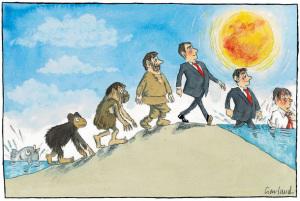Great article. The biologically boring future has been exemplified by weed

From Climatebites
invasions of the past where single species replaced diverse species groups. The rate of selection for successful traits varies across species. Invasive species with short generation times are the best candidates for surviving something such as anthropogenic climate change that occurs in years and decades. Short-lived weeds and arthropods will be with us a long time. Longer-lived, slower-reproducing species such as giant redwoods, whales, elephants, and moose, probably won’t. Humans are in this second group. If our technology ever fails to protect us from the changing environment, we will be gone too.
 Originally posted on strange behaviors:
Originally posted on strange behaviors:
My latest for Takepart:
There’s plenty of evidence that species are already relocating in response to climate change. Tarpon now show up in summer as far north as Maryland. Humboldt squid have recently moved up from South and Central America into California. But is climate change also affecting the size and shape of animals’ bodies, or the way they function?
I first started thinking about the idea when I ran across a 2013 study of ocean acidification. It’s a subject I had scrupulously avoided until then because the words “ocean acidification” are, let’s face it, sleep-inducing. But stay with me a moment: The oceans have soaked up about a third of all the carbon dioxide put into the atmosphere by human activity over the past three centuries, with the result that marine creatures now live in water that is 30 percent more acidic than in pre-industrial times.
Think of it…
View original 829 more words



